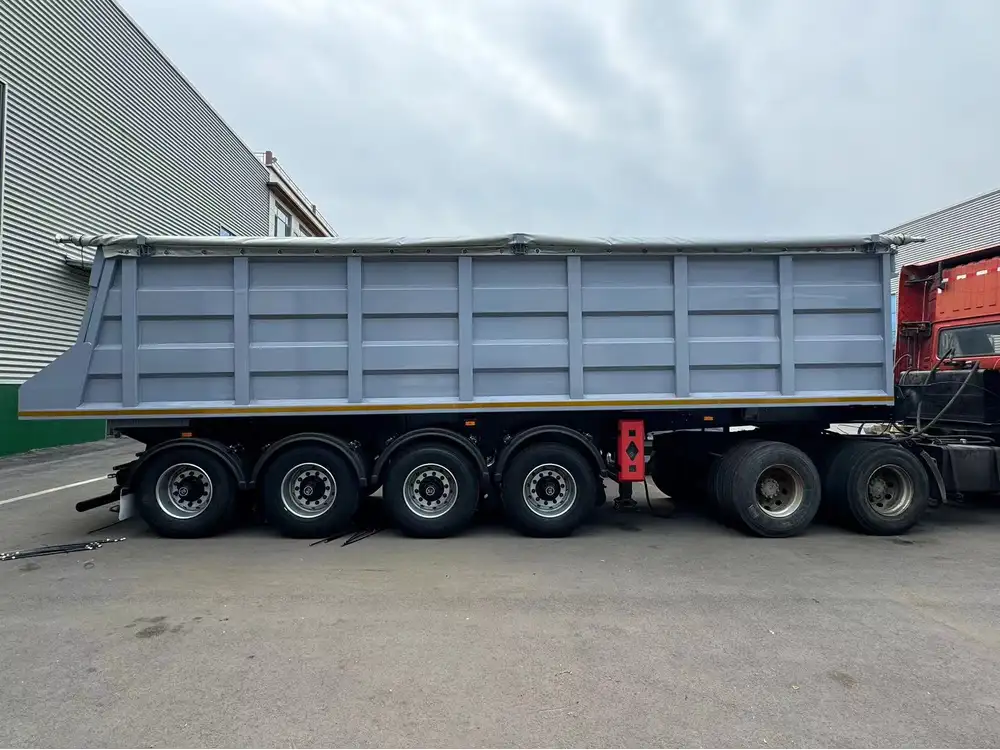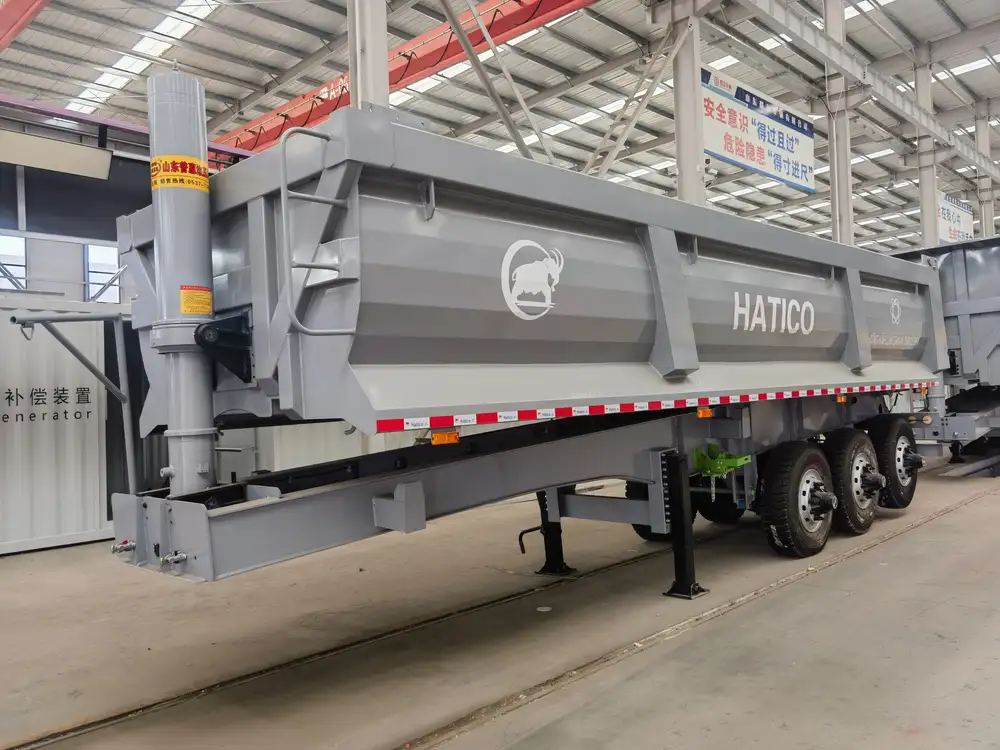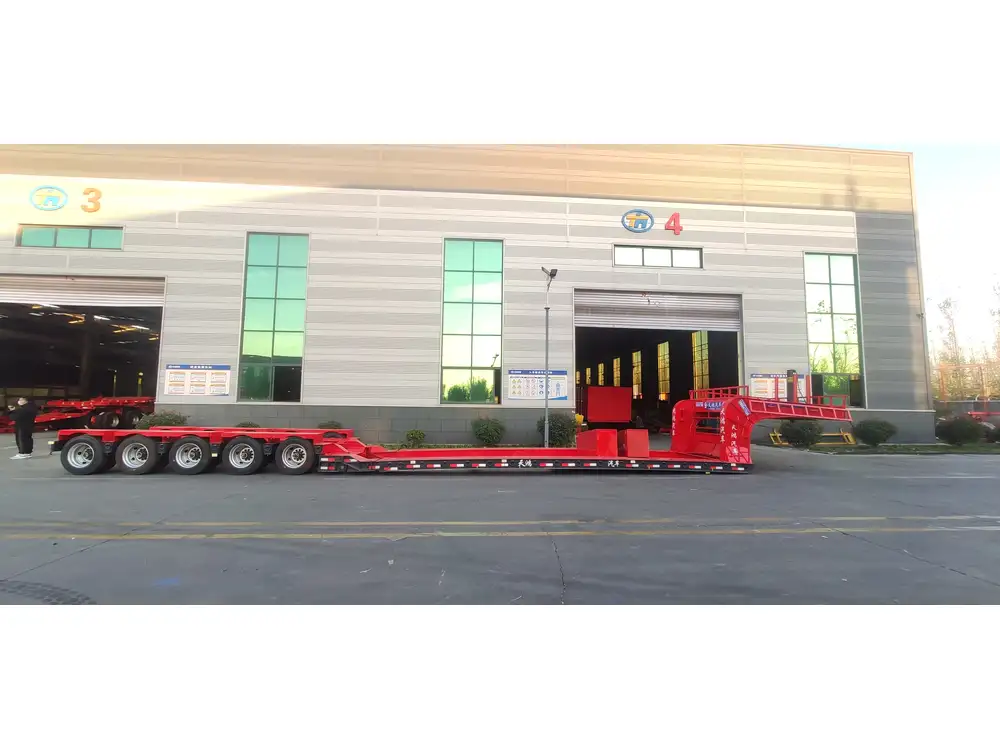Belly dump trailers are essential for construction and landscaping projects, designed to enhance efficiency and aid in various scooping and hauling tasks. Understanding how to optimally use this equipment is crucial for maximizing productivity and ensuring safety on the job site. This guide provides a thorough analysis of belly dump trailers, covering everything from operational procedures to maintenance tips.
Table of Contents
- What is a Belly Dump Trailer?
- Key Components of a Belly Dump Trailer
- Benefits of Using a Belly Dump Trailer
- Preparing to Use a Belly Dump Trailer
- Step-by-Step Guide on How to Operate a Belly Dump Trailer
- Best Practices for Safe Operation
- Maintenance of Belly Dump Trailers
- Common Issues and Troubleshooting
- Conclusion
What is a Belly Dump Trailer?
A belly dump trailer, also known as a bottom dump trailer, is a specialized type of trailer used for transporting loose materials, such as gravel, sand, and asphalt. Unlike traditional dump trailers that release loads from the back, belly dump trailers discharge their contents through gates at the bottom. This design enables precise unloading and allows for distribution in a controlled manner, which is particularly advantageous in construction and roadworks.

Key Components of a Belly Dump Trailer
Understanding the primary components of a belly dump trailer enhances your operational efficiency. Key parts include:
- Trailer Body: The main structure that holds the payload. Typically constructed from durable materials to withstand heavy loads.
- Discharge Gates: Located at the bottom of the trailer, these gates open to release the material. They can usually be controlled from the cab.
- Hydraulic System: Powers the opening and closing of the discharge gates.
- Axles and Suspension: Designed to support heavy weights while providing stability during transportation.
- Kingpin and Coupler: Essential for connecting the trailer to the tractor.
Comparison of Belly Dump Trailers vs. Side Dump Trailers
| Feature | Belly Dump Trailers | Side Dump Trailers |
|---|---|---|
| Unloading Mechanism | Bottom gates | Side gates |
| Precision Unloading | High | Moderate |
| Load Distribution | Evenly spread across width | Typically concentrated |
| Best for | Materials like asphalt | Aggregates and heavier loads |
| Maneuverability | Certain limitations | Generally more flexible |
Benefits of Using a Belly Dump Trailer
Investing in a belly dump trailer brings notable advantages:
Time Efficiency: Since they unload from below, belly dump trailers can discharge their loads rapidly and return to work, reducing site downtime.
Controlled Discharge: The ability to direct material discharge ensures precise placement, minimizing the need for subsequent adjustment.
Versatility: These trailers are effective for numerous materials, enhancing their usability across various projects.
Reduced Material Loss: By having the capability to spread loads carefully, the chances of material spill are significantly less than with conventional dump trailers.

Preparing to Use a Belly Dump Trailer
Before hitting the road, proper preparation is essential:
Inspect the Equipment: Conduct a thorough inspection of the trailer’s body, discharge gates, hydraulic systems, and axles. Look for wear, leaks, or other signs of damage.
Load Capacity Check: Ensure you are aware of the trailer’s load capacity. Overloading can cause mechanical failures or accidents.
Secure Load: Ensure that the load is evenly distributed within the trailer to avoid instability during transport.
Personal Protective Equipment (PPE): Equip yourself with the necessary PPE, including a hard hat, gloves, and reflective clothing, particularly when working in congested areas or near moving machinery.
Step-by-Step Guide on How to Operate a Belly Dump Trailer
Operating a belly dump trailer can seem complex at first. Follow these steps for proper usage:
1. Positioning the Trailer
- Align the trailer with the load source, ensuring ample space to maneuver.
- Ensure the trailer is level for optimal loading.

2. Hooking Up the Trailer
- Use a compatible truck with a fifth-wheel hitch to secure the trailer.
- Always double-check connections to prevent detachment during movement.
3. Loading the Trailer
- Utilize a loader or conveyor to fill the trailer uniformly.
- Watch for any overloading, as this can compromise stability.
4. Transporting the Load
- Drive cautiously; avoid abrupt maneuvers that could shift the load.
- Maintain safe speeds especially when turning corners or navigating inclines.

5. Unloading the Trailer
- Position the trailer over the desired drop zone.
- Engage the hydraulic system to open the discharge gates.
- Ensure that the area is clear of personnel and debris before unloading begins.
6. Monitoring Discharge
- Control the release of material to achieve even distribution.
- Be aware of environmental factors like wind that may affect material placement.
7. Securing the Trailer After Unloading
- Once the load is discharged, close the gates.
- Check for any remnants that may have spilled and clean as necessary.

Best Practices for Safe Operation
Safety should always be a priority when operating heavy machinery. Implement the following practices:
- Training: Ensure operators are trained and licensed for the use of heavy equipment including belly dump trailers.
- Communication: Use hand signals or radios to communicate with crew members, especially in noisy environments.
- Stay Aware: Keep an eye out for potential hazards, including overhead lines, uneven ground, and nearby workers.
- Regular Breaks: Fatigue can lead to mistakes. Schedule regular breaks during operation.
Maintenance of Belly Dump Trailers
A well-maintained trailer performs better and lasts longer. Regular maintenance should include:
Daily Inspections: Check the integrity of the structure, loading mechanisms, and hydraulic systems before use.
Fluid Levels: Regularly check and top off hydraulic fluid in the system to prevent operational failures.
Lubrication: Regularly lubricate moving parts to reduce wear and friction.
Tire Maintenance: Inspect tire pressure regularly and look for signs of excessive wear or damage.
Brake Checks: Ensure brakes are functioning correctly and adjust if necessary.
Common Issues and Troubleshooting
Even with regular maintenance, issues may arise. Here are some common problems and solutions:

Loading Problems
Issue: Difficulty in loading the trailer.
Solution: Ensure the loader is aligned properly and that the trailer is level. Adjust the loader’s angle if needed.
Hydraulic Failures
Issue: Discharge gates won’t open or close.
Solution: Check hydraulic fluid levels and inspect for leaks in the system. Replace or repair damaged hoses.
Uneven Loading
Issue: Load shifts during transport.
Solution: Regularly inspect load distribution and ensure the trailer is loaded evenly.

Tire Issues
Issue: Excessive wear and tear on tires.
Solution: Regularly check tire pressure and replace tires that show signs of damage or excessive wear.
Conclusion
The effective use of a belly dump trailer not only boosts productivity but also enhances safety on the job site. Thorough understanding of operational procedures, maintenance requirements, and safety measures ensures that this versatile equipment serves its purpose optimally. By following the guidelines provided in this comprehensive guide, users can maximize the benefits of utilizing belly dump trailers across various projects. Whether you are in construction, road repair, or landscaping, mastering the use of a belly dump trailer is vital for operational success and efficiency.



